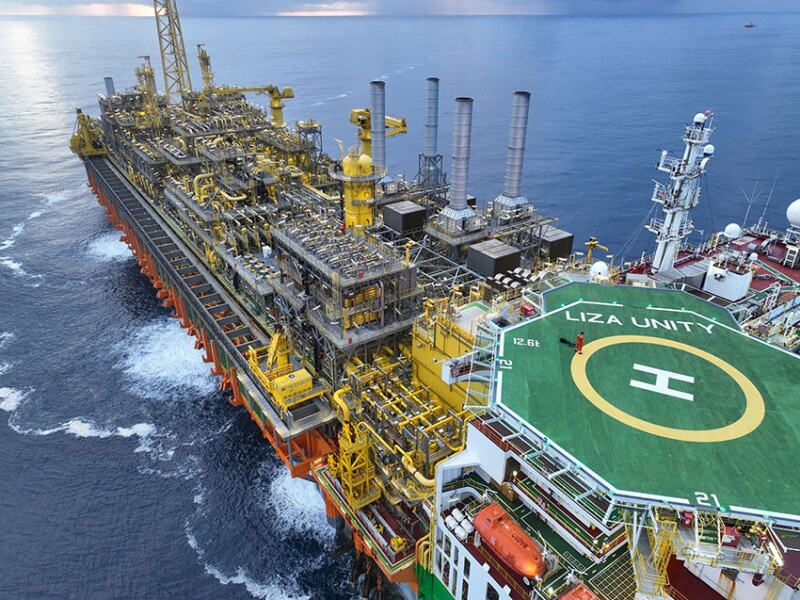ExxonMobil marked 5 years of oil and gas production offshore Guyana earlier this month, propelling the quiet South American nation of about 800,000 people into an energy powerhouse.
The milestone comes after the Houston-based oil company has installed three deepwater developments Guyana’s Stabroek block—Liza Phase 1, Liza Phase 2, and Payara—which today combine for more than 600,000 B/D. The projects are considered among the world's most successful and efficient with an estimated breakeven cost below $30, which is lower than ExxonMobil's Permian Basin cost of supply.
Since ExxonMobil announced first oil at the offshore Liza Phase 1 project in 2019, Guyana has become the third largest oil producer in the world on a per capita basis.
The FPSO at Liza Phase 1 includes four subsea drill centers supporting 17 wells. Liza Phase 2 reached first production in February 2022, using an FPSO with six drill centers, 15 oil producing wells, nine water injection wells, and six gas injection wells.
In November 2023, production at the Payara project begin using the FPSO Prosperity. Payara has a total of 41 wells: 20 production wells and 21 water and gas injection wells.
Prosperity joins the Liza Unity as two of the world’s first FPSOs to be recognized by the American Bureau of Shipping for their sustainable design and operations. ExxonMobil reports that the three projects are about 30% less greenhouse gas intensive than the rest of its portfolio.
Citing data from energy market research firm Rystad Energy, ExxonMobil added that its Guyanese FPSOs count as some of the top performing in the world, boasting a smaller emissions footprint than 75% of global oil and gas producing assets.
ExxonMobil has plans for five additional deepwater projects in Guyana by the end of the decade, projecting production will more than double to 1.3 million B/D with a capacity ceiling of 1.7 million B/D.
Two other FPSOs are under construction to develop the Yellowtail and Uaru fields—also in the Stabroek block—with anticipated start dates in 2025 and 2026, respectively. In April, ExxonMobil approved a sixth FPSO, Jaguar, to be used on the Whiptail project, which is expected to begin producing in 2027.
For Guyana, ExxonMobil's arrival has translated into $2 billion in direct investment in the local economy along with 6,000 citizens employed with the oil and gas giant. According to the US Department of State, Guyana's economy grew at a 33% rate in 2023 making it one of the world's fastest growing economies, a direct result of the country's rapid rise as an oil and gas exporter.


